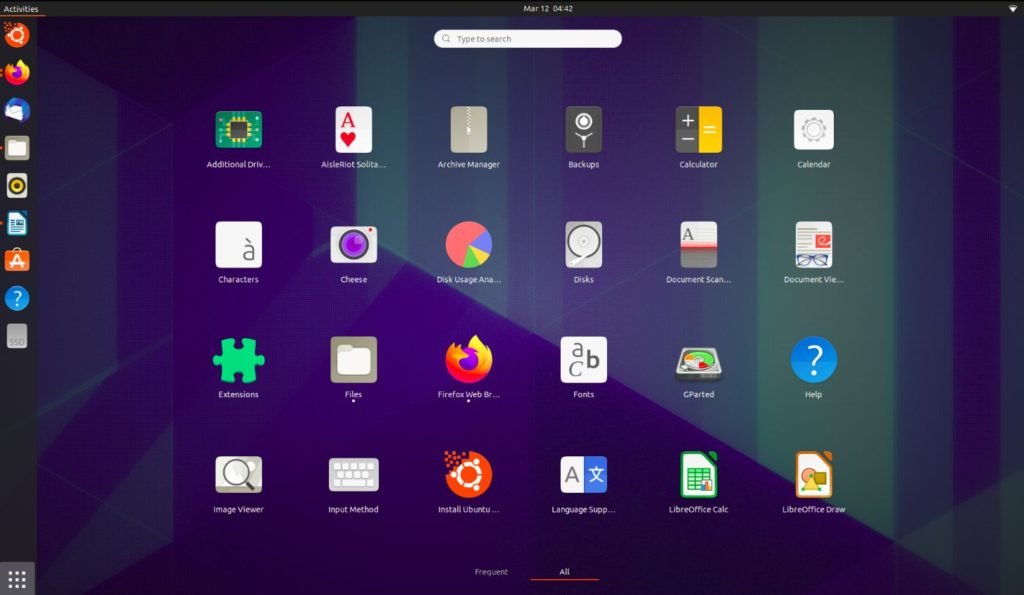A quick glance at the latest GNOME 3.36 release, see what’s new.
The popular Linux desktop environment GNOME brings another milestone update with its release 3.36 version. This version undoubtedly the “performance improvement” release as per user feedback for the past couple of weeks when people tried the beta.
There has been positive feedback on GNOME’s overall performance in the desktop from all around the world whoever tried. The so-called GNOME slowness in desktop is gone, rather much improved in existing hardware. A raft of changes in this release includes some new arrangements in settings, a new app dedicated to extensions, tweaks in system tray section, do-not-disturb feature and login screens.
Here’s a rundown of the changes of GNOME 3.36.
Table of Contents
What’s New in GNOME 3.36
Visual Improvements
Login and lock screen completely redesigned. Now you do not need to click through multiple options to find the users and other settings. The login screen now shows your wallpaper with heavy blur with avatar icon (can be your picture as well)
The available user list also shows the avatar which helps you to quickly choose from the user list for a shared computer.
The password box now has an icon to show the password to help users entering the correct password (this is a system-wide change).
Power off, shut down, suspend and log out options are now clearly visible with submenu groupings.
GNOME shell now adapts itself with system font settings. So, if you are using the Ubuntu tweak tool to change the system font, it is now applied in GNOME shell as well.
The calendar+notification popover now has a notification list and a do not disturb button. This helps you to concentrate on your work without looking at the notifications.
This pop over now shows world clock and weather as well by default.
NVIDIA GPU Support
If you are using NVIDIA drivers with GPU, now you can launch applications with GPU. Once the GPU is available in the system, you should see the context menu with the option “Launch on Discrete” menu item.
New App and Performance
A new app named “Extensions” is launched to manage the GNOME shell extensions. GNOME extensions are invaluable quick utilities to extend the power of GNOME shell. Before this, to install and use the extension, you had to use the official website and then turn on or turn off the extensions (although Ubuntu tweak tool had it).
Now, with this new built-in app, you can use the configure, enable and disable all extensions right from the desktop without visiting the website.
Performance has been improved across the GNOME shell and it can be felt when used heavily. For example, screencasting now uses less CPU, touch supports have been improved for touch screen laptops/devices), etc.
Settings Section Updates
About section is improved and redesigned and now shows important system information.
The privacy section is improved. If you have permitted apps that use location services, they are listed down in this section. This section also includes dedicated groups for Camera, microphone and other devices that are accessed by applications.
Application updates
The clock app is completely redesigned with responsive UI.
Shotwell (image viewer and manager) is replaced by Photos. Evolution (email client) is replaced by Geary. Rhythmbox (music player for a long time in GNOME) is replaced by Music.
Web (the built-in web browser for GNOME) is having a responsive design now with dark mode and PDF support.
The software app can pause its download when it detects a metered network.
How to download GNOME 3.36
For Arch Linux (extra repo), the latest GNOME 3.36 immediately available. If you are looking to install in Ubuntu-based distributions, you have to wait until April 2020 when Ubuntu Focal Fossa 20.04 releases with GNOME 3.36 as default desktop environment. GNOME 3.36 also due release with upcoming Fedora 32 release.
Check out the get GNOME page for more details.
Alternatively, you can experience the latest GNOME 3.36 by downloading Ubuntu 20.04 Focal Fossa daily builds from the below link.
Via announcement.




